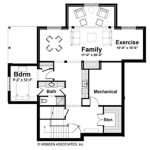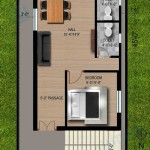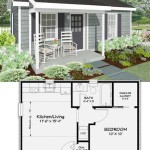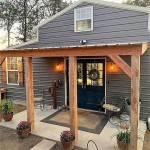Three Bedroom House Plans With Dimensions: A Comprehensive Guide
Three-bedroom house plans are a consistently popular choice for a variety of homeowners, offering a balance of space, functionality, and affordability. They cater to small families, young professionals, retirees, or even individuals who desire extra room for guests, hobbies, or a home office. Understanding the nuances of three-bedroom house plans, including their typical dimensions and layout options, is crucial for making informed decisions during the design and building process. This article provides a comprehensive guide to three-bedroom house plans with dimensions, exploring key considerations, common layouts, and factors influencing size and cost.
Understanding the Average Dimensions of a Three-Bedroom House
The overall dimensions of a three-bedroom house can vary significantly based on several factors, including the desired style (ranch, two-story, split-level), the number of bathrooms, the presence of a garage or basement, and the size of the individual rooms. However, a general range can provide a helpful starting point for planning. The average three-bedroom house typically falls between 1,200 and 2,200 square feet. This range provides sufficient space for comfortable living without being excessively large or expensive to maintain.
A house closer to the 1,200 square foot end of the range likely features more compact rooms and a simpler layout, potentially with one or two bathrooms and a small living area. Such designs are often found in starter homes or smaller suburban developments. Conversely, a house approaching 2,200 square feet may incorporate larger bedrooms, a dedicated dining room, a master suite with a walk-in closet and ensuite bathroom, and potentially a finished basement or a generously sized garage. The number of stories also greatly impacts the footprint of the house; a single-story home of 2,000 sq ft requires a much larger lot size compared to a two-story home with the same total square footage.
Individual room dimensions also play a crucial role. A typical master bedroom in a three-bedroom house might measure around 12 feet by 14 feet (168 square feet), offering enough space for a queen or king-sized bed, dressers, and nightstands. Secondary bedrooms are often smaller, averaging around 10 feet by 12 feet (120 square feet), sufficient for a twin or full-sized bed, a desk, and a closet. The living room might be approximately 15 feet by 20 feet (300 square feet), providing ample space for seating and entertainment. Kitchens vary significantly in size, but a functional kitchen often measures at least 10 feet by 12 feet (120 square feet), allowing for adequate counter space and appliance placement.
The dimensions of hallways and bathrooms should also be considered. Hallways need to be wide enough for comfortable passage, typically at least 3 feet wide, and bathrooms generally require a minimum of 5 feet by 8 feet (40 square feet) for a standard toilet, sink, and shower or tub. Accurate dimensioning of these essential spaces, with consideration for local building codes, is paramount for a functional and comfortable home.
Popular Three-Bedroom House Plan Layouts
Numerous layout options are available for three-bedroom house plans, each offering unique advantages and disadvantages based on lifestyle preferences and lot characteristics. Several popular layouts include the ranch-style, the two-story, and the split-level design. Each layout impacts the overall footprint and internal flow of the house.
The ranch-style house is typically a single-story dwelling characterized by its horizontal layout and attached garage. This layout is often preferred for its ease of accessibility, making it suitable for families with young children or individuals with mobility concerns. In a ranch-style three-bedroom plan, the bedrooms are often clustered together on one side of the house, while the living areas (living room, dining room, and kitchen) are located on the other. This separation helps to maintain privacy in the sleeping areas. Ranch-style homes generally require a larger lot size due to their single-story footprint.
Two-story house plans, as the name suggests, feature two levels of living space. This design allows for a smaller footprint compared to a ranch-style house of equivalent square footage, making it ideal for properties with limited space. In a two-story three-bedroom plan, the bedrooms are typically located on the upper level, providing a distinct separation from the living areas on the ground floor. This separation enhances privacy and reduces noise transfer. The master bedroom is often placed at the end of the hallway, offering additional privacy and potentially incorporating a larger ensuite bathroom and walk-in closet. A staircase is a necessary element of a two-story house, consuming some square footage and potentially presenting a mobility challenge for some residents.
Split-level house plans are characterized by multiple levels connected by short flights of stairs. This design provides a degree of separation between different living areas, making it suitable for families with diverse needs. In a split-level three-bedroom plan, the bedrooms might be located on one level, the living areas on another, and a garage or recreation room on a third. Split-level designs can be visually interesting and can adapt well to sloping lots, but they may present accessibility challenges for individuals with mobility limitations.
Beyond the basic structural layout, interior configurations also vary. Open-concept layouts, where the living room, dining room, and kitchen flow seamlessly together, are increasingly popular for their spacious feel and suitability for entertaining. In contrast, more traditional layouts feature distinct rooms separated by walls, offering greater privacy and noise control. The choice between an open-concept and a traditional layout depends on the homeowner's lifestyle and personal preferences.
Factors Influencing Three-Bedroom House Size and Cost
Several factors influence the size and cost of a three-bedroom house plan, including the chosen materials, the complexity of the design, the location of the property, and the level of customization. Understanding these factors is essential for developing a realistic budget and making informed decisions throughout the building process.
The choice of building materials significantly impacts the overall cost of the house. Using high-end materials, such as hardwood flooring, granite countertops, and custom cabinetry, will naturally increase the budget compared to using more affordable alternatives, such as laminate flooring, laminate countertops, and stock cabinetry. Similarly, the exterior materials, such as brick, stone, or siding, will affect the cost. While premium materials offer enhanced aesthetics and durability, they require a larger upfront investment. Balancing aesthetic preferences with budgetary constraints is crucial.
The complexity of the design also plays a significant role in determining the cost. A simple, rectangular house plan with a straightforward roofline will generally be less expensive to build than a more complex design with intricate angles, multiple gables, or a custom-designed roof. Complex designs require more skilled labor and may involve specialized building techniques, increasing both labor and material costs. Simplifying the design without sacrificing essential features can help to reduce costs without compromising functionality.
The location of the property significantly influences the cost of construction. Labor costs, material prices, and permit fees can vary considerably from one region to another. Areas with high demand for housing and a shortage of skilled labor tend to have higher construction costs. Additionally, the cost of land also varies significantly depending on the location. Building in a rural area may be less expensive initially, but accessibility to services and utilities may increase overall costs. Conversely, building in an urban area may involve higher land costs but benefit from readily available infrastructure and services.
The level of customization also affects the cost. Stock house plans are generally less expensive than custom-designed plans. Stock plans offer pre-designed layouts with fixed dimensions, while custom plans allow homeowners to tailor the design to their specific needs and preferences. Customization adds design fees and potentially increases construction costs due to unique features and modifications. While customization can result in a truly personalized home, it is imperative to carefully consider the budgetary implications. Minimizing unnecessary customizations and focusing on essential features can help to keep costs under control.
Furthermore, the inclusion of additional features, such as a finished basement, a large deck, a swimming pool, or smart home technology, will increase the overall cost. These features require additional labor and materials and should be carefully considered within the context of the overall budget. Prioritizing essential features and deferring less critical additions can help to make the project more financially manageable.
Finally, it's important to factor in unexpected costs. A contingency fund of at least 10% of the total construction budget is recommended to cover unforeseen expenses, such as unexpected site conditions, material price increases, or design changes during construction. This contingency fund provides a financial buffer to prevent the project from derailing due to unforeseen circumstances.

Simple Yet Elegant 3 Bedroom House Design Shd 2024031 Duplex Plans Unique Three Plan
3 Bedroom House Plans Three Design Bhk Plan Civiconcepts

Free 3 Bedroom Floor Plan With Dimensions

Beautiful Three Bedroom House Plans Blog Floorplans Com

Simple Three Bedroom House Plans To Construct On A Low Budget Co Ke

7 Best 3 Bedroom House Plans In 3d
3 Bedroom House Plans Three Design Bhk Plan Civiconcepts

Popular And Stylish 3 Bedroom Floorplans Plans We Love Blog Homeplans Com

Simple Three Bedroom House Plans To Construct On A Low Budget Co Ke

3 Bedroom House Plans Home Designs Nethouseplans
Related Posts








